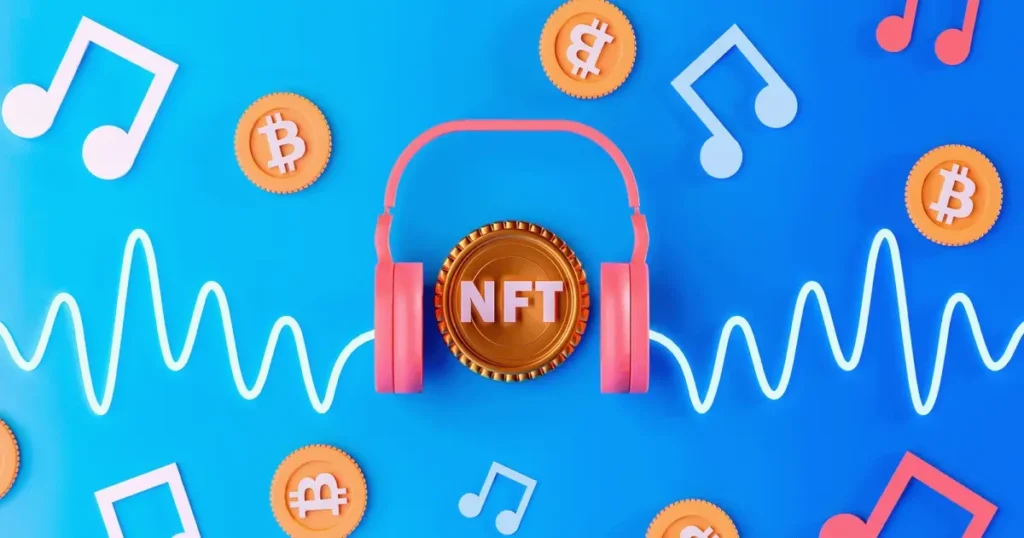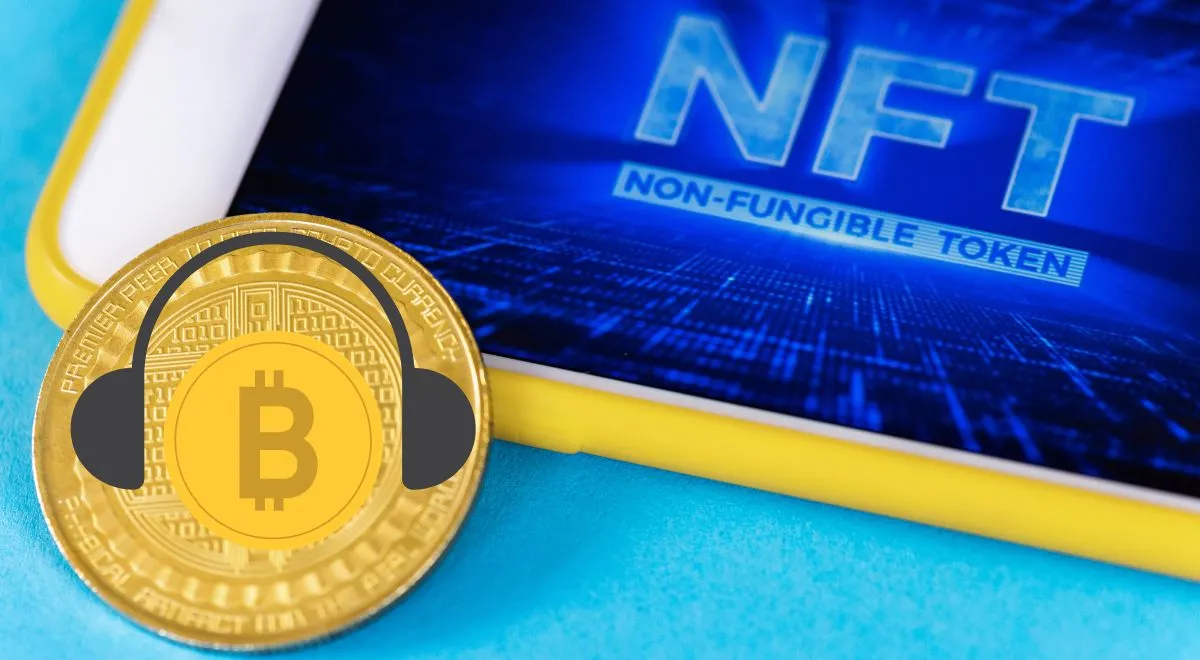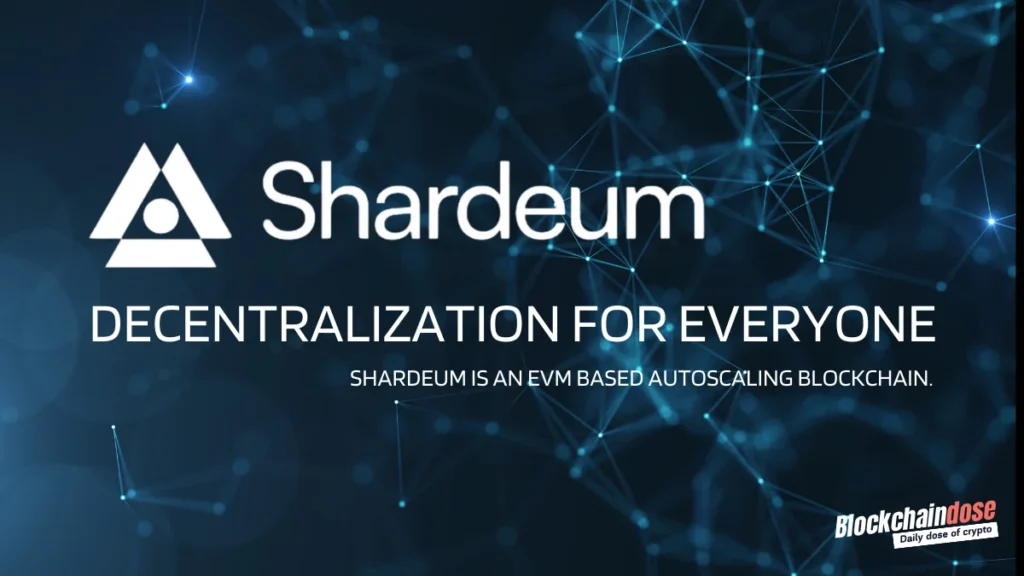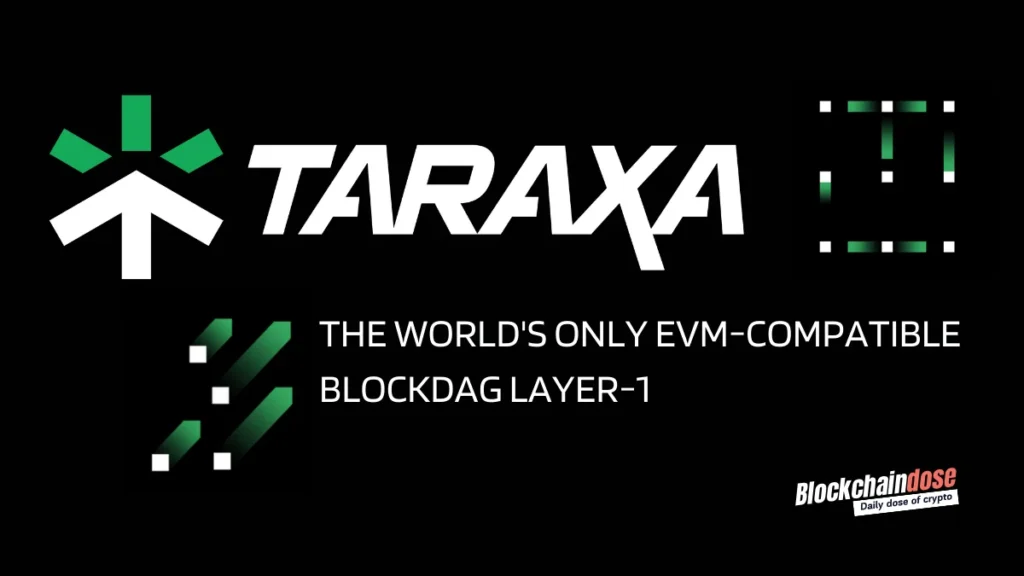Every human society is influenced by the creative medium of music. The music industry has shown remarkable resilience and growth in recent years. In 2023, global recorded music revenues hit $28.6 billion, up 10.2% from 2022. The U.S. market alone generated $17.1 billion, an 8% increase from 2022. While industry growth continues, most gains benefit a small number of leading publishers and platforms. As a result, more musicians are exploring NFTs, with some releasing an NFT music album to reach global audiences while avoiding fraud and other issues. Music NFTs help artists reach global audiences while avoiding fraud and other issues. One of the best and most useful applications of blockchain technology is NFTs. The music industry has experienced significant transformation as a result of the NFTs.
What is Music NFT?
A music NFT is a certificate that shows who owns this work. Anyone can purchase it. The composition’s use is entirely at the owner’s discretion. NFT refers to all types of fungible tokens, which have many copies that are held or managed by various parties. These blockchain-secured tokens provide owners unique access to music, an NFT music album, videos, and other content. They follow the ERC-721 standard. To make a music NFT, artists first register their music. A third party then confirms it. Finally, it’s recorded on the blockchain. This process ensures the music is authentic and legal.

Each music NFT will be available in the user’s portfolio and will be connected with a unique identifier that may be shared with other users to verify ownership. Users may use this ID code to check out the blockchain in real time to verify every transaction with any music NFT. Musicians can discover the actual value of their talent using Music NFTs, breaking away from traditional music distribution structures.
NFT in Music Industry
Music NFTs are a creative and modern way to buy, sell, and enjoy music. Solo tracks, videos, or a whole album can all be used to make NFTs. They can also be used as rewards, goods, or concert tickets.
Artists may make money from their work by producing NFTs that can be sold on any NFT music marketplace. The rise of music tokenization has resulted in musicians receiving greater royalties because ownership rights are kept on the blockchain and cannot be changed. As such, when NFTs of music are sold, the artists get paid what they rightfully deserve. On the other hand, music lovers can show their support for their favorite artists and benefit financially by purchasing these NFTs.
The potential for NFTs in the music industry is significant and growing. Projections for the global music NFT market are optimistic, with one forecast estimating it to reach $6.002 billion by 2028. Another projection mentioned by globalgrowthinsights.com suggests the market could reach $398.1 million by 2030, with a compound annual growth rate (CAGR) of 19.9% from 2024-2030. These figures indicate a strong potential for growth in the music NFT space.
Learn more about How to become NFT Artist.
Types of music NFTs:
In the music industry, Non-Fungible Tokens (NFTs) take various forms and serve unique purposes, such as event tickets, exclusive merchandise, collectibles, and music creation ownership rights.
The types of NFT music are as follows:
- Ticket NFTs
- Musicians and music lovers benefit greatly from ticket NFTs. Ticket fraud can be significantly decreased by transferring ticket NFTs to the customer base. NFT tickets are more valuable than printed tickets, which are only good for the event day. You could resell these NFTs for their market value.
- Songs and Albums
- Currently, a large number of musicians and artists are releasing entire albums and songs as NFTs. Purchasing their NFTs allows anyone who is interested in buying the art of their favorite musician to do so.
- Video NFTs
- Music videos or performance videos can be created and offered for sale as NFTs at regular rates. With these NFTs, fans may capture moments in time and resale them for a profit.
- Digital Art related to music
- The music business is mostly dependent on artwork. Digital artworks in the music industry include posters, record covers, and concert photos. These assets can all be converted into NFTs and traded for profit.
- Autograph NFTs
- Music lovers can now obtain the autographs of their favorite artists or performers in the form of NFTs. Music fans value the signatures of their stars. As a result, storing them as NFTs raises their worth and enables them to be sold for a greater price.
How to create music NFTs?
Music is converted into NFTs through a process called Minting. The steps to mint NFT music are listed below:
- Choose a Digital Art:
- You must have an original piece of digital art. This can be a cover art, audio or video clip, 3D animation, GIF, or any other type of digital asset.
- Choose a Cryptocurrency Wallet:
- You need a place to mint and store NFTs before you can begin minting them. They are also important tools for purchasing, selling, and trading cryptocurrencies, which serve as NFT exchange mediums. Hardware and software versions of cryptocurrency wallets are available.
- Buy Cryptocurrency:
- In order to mint your NFT or turn your digital file into NFT music, you will need to purchase some digital currency. The majority of NFTs require “gas,” or the computational “fuel” required to transform digital assets into NFTs.
- Upload your NFT to an NFT Platform:
- After converting your digital assets to NFTs, you will be given the choice to sell them on one of the many NFT marketplaces that are available. You can make use of markets like Axie Marketplace, OpenSea, Rarible, and Ethereum blockchain.
Top Music NFT Marketplaces
You can develop, mint, and trade digital assets for your NFT game on a number of popular music NFT marketplaces. Here are some top music NFT marketplaces:
OpenSea
OpenSea lets users create their own music NFTs on the blockchain. Artists can mint each NFT up to five times. The platform supports a wide range of payment options. Users can buy and sell using over 150 different cryptocurrencies. Popular choices include Ethereum, Solana, USDC, and DAI. This variety gives artists and collectors flexibility in transactions.
Rarible
Another well-known music NFT marketplace is Rarible. It provides compatibility for several blockchains, including Ethereum, Flow, Tezos, and Polygon, and provides an extensive collection of music NFTs. In addition to providing free minting services, it charges musicians royalty fees that can reach 10%.
Royal
Royal is an NFT marketplace designed with music-related NFTs in mind. In order to get royalties from the artist, it helps people to own a portion of their favorite music. With it, musicians may decide how much of the song’s royalties to sell online or even package exclusive songs, fan experiences, digital artwork, and other items. Users can buy and sell NFT music using crypto or payment cards.
Audius
Launched in 2019, Audius is a decentralized music platform built on Ethereum and Solana blockchains. It uses the AUDIO token for governance and rewards. With over 7.5 million monthly active users as of 2023, Audius partners with TikTok to allow direct music uploads. The platform offers free hosting and distribution for artists, with a revenue model based on staking rewards rather than taking a cut from artists. Its decentralized governance allows token holders to vote on platform decisions.
OneOf
OneOf, launched in 2021, is built on the Tezos blockchain for energy efficiency. It focuses on music, sports, and lifestyle NFTs, offering “green NFTs” with lower environmental impact. OneOf has partnerships with the Grammy Awards and Warner Music Group. The platform allows credit card purchases, targeting mainstream adoption, and has featured drops from major artists like Doja Cat and The Notorious B.I.G. estate.
SoundMint
SoundMint, launched in 2021, originally focused on generative music NFTs but now emphasizes “phygital” offerings combining digital and physical elements. It uses AI to generate unique audio-visual NFTs. The platform has partnered with artists like Diplo and Claude VonStroke, allowing artists to create collections of thousands of unique music NFTs.
Async
Launched in 2019, Async pioneered the concept of “programmable art” NFTs. The platform splits music into separate layers for ownership. Owners can change their layer to influence the final song. Async works with visual artists as well as musicians and has featured artists like Gramatik, 3LAU, and RAC.
Opulous
Founded in 2021 by Ditto Music CEO Lee Parsons, Opulous is built on the Algorand blockchain. It offers “music copyright NFTs” allowing fans to invest in songs, using DeFi principles to provide artist funding. Opulous partners with Republic to enable compliant security offerings, aiming to provide alternative funding for artists outside traditional labels.
MakersPlace
Founded in 2018, MakersPlace is one of the earliest NFT marketplaces. Known for high-end digital art offerings, it has expanded into music NFTs featuring renowned artists. MakersPlace partnered with Christie’s for Beeple’s record-breaking $69M NFT sale. The platform emphasizes authenticity and rarity in its offerings and accepts both cryptocurrency and credit card payments.
How Musician make Money from music NFTs?
Musicians that create NFTs can profit from the following:
- Single Collectible
- Musicians have the option to produce a single collectible that mints a special, one-of-a-kind NFT and musicians can make money from this.
- Multiple Collectibles
- Artists can release several copies of one NFT. They earn money from each copy sold. This approach boosts profit potential.
- Royalties
- Creators earn money when their NFTs sell again. They get a cut of each secondary market sale.
Challenges NFTs Pose for Artists
NFTs are becoming more and more popular and can open up new doors for artists, but there are problems and concerns with them as well.
Potential reasons which can harm NFTs artists
| Concern | Description |
|---|---|
| Environmental Concerns | NFTs face criticism for their environmental impact. Many use Proof of Work blockchains, which consume high energy. This process requires significant computing power, resulting in a large carbon footprint. These concerns pose a major challenge for the NFT industry. |
| Lack of Regulation | The NFT space is relatively new and lacks the regulation present in traditional art markets. This can lead to issues like copyright infringement, plagiarism, and fraud. Artists may struggle to navigate legal matters and protect their intellectual property. |
| Price Volatility | The NFT market experiences price volatility, with some pieces selling for high rates while others struggle to find buyers. Artists may find it difficult to earn regular income due to unpredictable market fluctuations. |
| Accessibility and Equity | While NFTs can democratize art by giving artists global reach, high minting and transaction fees can be a barrier for some artists, limiting access to the market. |
Conclusion:
Musicians may now make money from their work and interact with fans in new ways with the help of music NFTs. Through music NFTs, musicians can market content that is unique, including previously unheard songs, live performances, and digital artwork, while fans can buy a part of their favorite musician’s work and take part in a supportive community.
The music industry has undergone significant changes in recent years, with streaming becoming the dominant form of music consumption. The number of paid streaming subscribers exceeded 500 million globally for the first time in 2023, reaching over 667 million users.
Music NFTs have the power to completely change how people find, share, and make money through this. It’s important that the music business adopts this new technology and explores its possibilities for the good of both consumers and artists as music NFTs continue to gain popularity.
FAQ
NFT music is a unique digital audio file or music-related content tokenized on a blockchain, offering verifiable ownership and scarcity. It allows artists to sell exclusive tracks, albums, or experiences directly to fans as collectible digital assets.
To sell music as an NFT, create your digital audio file, choose a blockchain marketplace, set up a crypto wallet, and mint your NFT by uploading your music and metadata. Then set your price, list your NFT for sale, and promote it to potential buyers, ensuring you have full rights to the music.
To buy NFT music, set up a crypto wallet and browse NFT marketplaces that feature music, such as OpenSea, Rarible, or music-specific platforms like Catalog. Once you find a piece you like, ensure you have enough cryptocurrency to cover the cost and any gas fees, then complete the purchase through the platform’s interface.




